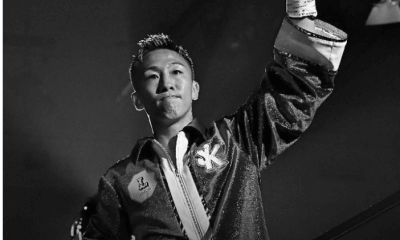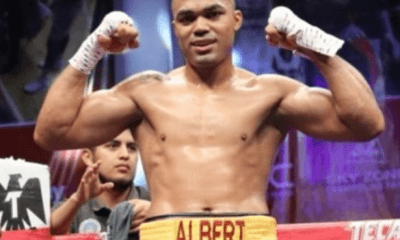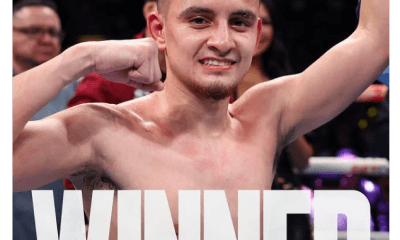Featured Articles
For Whom the Bell Tolled: 2023 Boxing Obituaries PART ONE (Jan.-June)
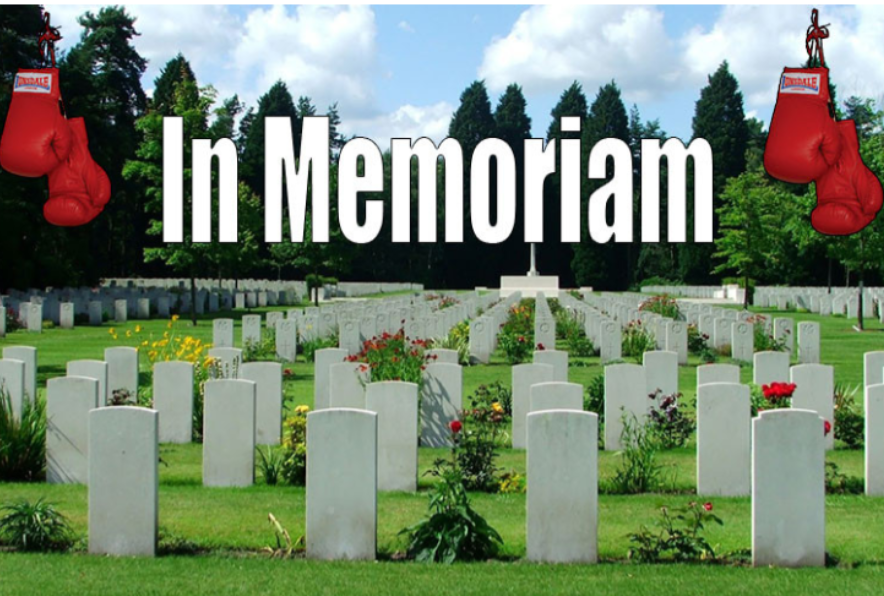
Here in our annual end-of-year report, we pay homage to the boxing notables who left us in the past year in a two-part story. May they rest in peace.
January
Jan. 2 – HECTOR ROCA – A bicycle racer in his native Panama, Roca moved to New York in 1975 and became a fixture at Gleason’s Gym. He helped train more than a dozen world title holders including Arturo Gatti, Buddy McGirt and Iran Barkley plus Hillary Swank who thanked him on national TV for sculpting her into a boxer for her Oscar-winning performance in “Million Dollar Baby.” At age 82 in Brooklyn where he was dealing with multiple health issues.
Jan. 12 – GERRIE COETZEE – The third time was a charm for the three-time world heavyweight title challenger who became a national hero in his native South Africa when he KOed Michael Dokes in 1983 in one of the biggest upsets of the decade. His first stab at the belt (vs. John Tate) was witnessed by an integrated crowd of 80,000-plus in Pretoria, a watershed event in the sporting history of that country. At age 87 in Cape town five days after being diagnosed aith an aggressive form of skin canver.
Jan. 30 – DARRELL CHAMBERS – One of the original members of Kronk Gym’s fabled amateur boxing team, Chambers was 22-2 as a pro. He fought on the historic Hearns-Hagler card, losing to future 154-pound world title-holder Luis Santana in what would prove to be his final fight and then spent 26 years in the federal prison system for cocaine trafficking. At age 62 in Detroit of cardiac arrest.
February
Feb. 9 (approx.) – LEROY CALDWELL – An undersized heavyweight who was customarily taking fights on short notice, Caldwell was a gatekeeper for five men who held the world heavyweight title and six others who were world title challengers. He finished 28-31-5 in a 17-year career that began in 1979. At age 77 at a Las Vegas hospital after a lingering but unspecified illness.
Feb. 10 – KEN THOMPSON – An entrepreneur who created a building materials company that had clients as far away as China, Thompson started promoting fights as a hobby in 2000. His shows launched the careers of several world title-holders and a Hall of Famer in Timothy Bradley. Widely admired in the SoCal boxing community, he passed away in Anaheim on his 85th birthday.
Feb. 10 – RON LEWIS – One of England’s most prominent sports journalists, Lewis concluded his newspaper career with the Times of London where he covered numerous title fights at venues across the globe. Most recently, he was the primary UK correspondent for Boxing Scene. At age 54 of a sudden heart attack at his home in London.
Feb. 13 (approx.) — TOMMY HICKS – An Ithaca College (NY) graduate, Hicks was a special education teacher on his way to becoming an elementary school principal when he challenged Bob Foster for the world light heavyweight title in 1971. TKOed in 8, he finished 18-12-3. At age 78 in Newfane, NY, five years after suffering a serious injury when he was hit by a car on his morning walk.
Feb. 14 – KENNY “BANG BANG” BODNER – A silver medalist at age 17 in the Maccabiah Games, the Trenton, NJ, lightweight developed an avid following in Atlantic City where he had 15 of his 28 pro fights. “Bang Bang” had three fights fall out with “Boom Boom” Mancini, twice when Mancini was a world title-holder. He finished 25-2-1 (16) in a career mottled with legal problems. At age 62 in Pemberton, New Jersey, for reasons never disclosed.
March
March 5 – BOBBY GOODMAN – The son of Hall of Fame publicist Murray Goodman, Bobby joined his late father in the Canastota shrine, entering the Hall with the class of 2019. He spent 25 years with Don King, serving the flamboyant promoter in many capacities, and went on the become the Vice President of Boxing at Madison Square Garden. At age 83 at a hospital in Galloway, New Jersey.
March 11 – RICHIE KATES – A light heavyweight who earned his spurs on the rugged Philadelphia boxing circuit, Kates turned pro in 1969 at age 16 and finished his career with a record of 44-6-1 (23). He had two cracks at Victor Galindez’s world title, falling short in bouts that consumed 30 rounds. In retirement, he was recognized for his years of community service by having a street named after him in his longtime home of Bridgeton, NJ. At age 69 while under hospice care in Vineland, NJ.
March 14 – BOB HINDS – A two-time NCAA finalist representing the powerhouse University of Wisconsin, Hinds, a heavyweight, had only three pro fights, winning them all, but contributed to the sport with his patented jump rope, a beaded, plastic-covered nylon rope that found favor in boxing gyms around the country.
March 19 – DAVE ZYGLEWICZ – Zyglewicz, who took up boxing in the Navy, was 28-1 when he challenged Joe Frazier in 1969 in Houston, Ziggy’s adopted hometown. He came out smokin’, but at 5’10” and 190 pounds he was no match for Smokin’ Joe who stopped him in the opening round. When he left the sport, he returned to his hometown of Watervliet, NY, and opened a bar, Ziggy’s corner. At age 79 from stomach cancer at a hospital in Albany where he was a dementia patient.
March 24 – TONY MONTANO – Montano was recognized as the first native-born Arizonan to compete for a world title when he challenged WBA/WBC 154-pound champion Sandro Mazzinghi in 1964 (he came in overweight and was stopped in the 12th round). He fought many of the top middleweights of the era, finishing 51-34-3. At age 88 in Glendale, AZ.
April
April 1 – KEN BUCHANAN – Widely considered the greatest boxer from Scotland, Buchanan won the world lightweight title in Puerto Rico in 1970 with a 15-round decision over Ismael Laguna and made two successful defenses before losing the belt to Roberto Duran in a bout that ended after 13 rounds with the Scotsman claiming of a low blow that landed after the bell. Inducted into the IBHOF with the class of 2000, he finished 61-8 with six of those defeats coming in has last 11 bouts. At age 77 in a nursing home in Edinburgh where he was suffering from dementia.

Ken Buchanan
April 4 – IGOR VYSOTSKY – He never turned pro, but his amateur exploits made him a national hero. The only man to defeat Teofilo Stevenson twice, he TKOed the Cuban icon in their second encounter in 1976 in Minsk. He was 8-2 in U.S. rings (including a TKO of future heavyweight titlist Tony Tubbs) while touring with the Russian national team. At age 69 in his native Yagodnoye.
April 20 – KENJI YONEKURA – A 1956 Melbourne Olympian, he finished 13-10-1 (1 KO) but was far better than his record. He went 15 rounds with Pascual Perez in a failed bid for a world flyweight title and 15 rounds with Jose Becerra in a failed bid for a world bantamweight title. In retirement he ran a gym in Tokyo that produced five world title-holders. At age 86 in a sanitorium on the ourtskirts of Tokyo that was his home for the last six years of his life.
April 20 – JOSE LUIS GARCIA – The Venezuelan was 7-0 at LA’s iconic Olympic Auditorium beginning with a startling knockout of Ken Norton. Norton avenged the setback five years later by which time Garcia had become a chopping block for the likes of Ron Lyle (KO by 3) and Joe Bugner (KO by 2). He finished 30-8-1. At age 75 in Valencia, Venezuela, after a long battle with Alzheimer’s.
April 23 (approx.) – ARTHUR WILLIAMS – A stablemate of Roy Jones Jr when he turned pro in 1969 in his native Pensacola, Williams went on to win the IBF cruiseweight title, unseating Imanu Mayfield (TKO 9). But lost it in his first defense to Vasiliy Jirov (TKO by 7). He finished 47-13-3. “King Arthur” was 58 and seemingly in good health when he passed away in his sleep at his home in Las Vegas.
April 24 – IRVING MITCHELL – An alternate on the 1980 U.S. Olympic boxing team, Mitchell, who learned to box in the Army, turned pro in San Diego and went on to become a world title challenger at 126 and 130 pounds. “Sweet Irving” won 24 of his first 25 fights, his lone defeat coming at the hands of Azumah Nelson, and finished 35-11-2. At age 63 at a nursing home in his native Lafayette, Louisiana.
May
May 7 – JERRY ARMSTRONG – An All-Service champion before attending Idaho State University on a boxing scholarship, Armstrong competed in the 1960 Olympics as a bantamweight where he was a teammate of Muhammad Ali. The Petoskey, Michigan native never turned pro but stayed involved in the sport as a coach, referee, and chief of officials for the Idaho Athletic Commission. At age 86 in Boise after a long battle with Alzheimer’s.
May 10 – KENNETH EGANO – The 22-year-old Filipino bantamweight collapsed in his corner as he awaited the decision following an 8-round contest on a card promoted by Manny Pacquiao at Imus, Cavite, Philippines. Stretchered to a hospital in a coma, he died four days later of a cerebral hemorrhage. For the record, Egano won the bout, advancing his record to 7-1.
May 21 – CLAUDE NOEL – He became the first Tobagonian to win a world title when he captured the vacant WBA title in 1981 with a 15-riund decision over Rodolfo Gonzalez. He lost the belt in his first defense and finished 31-10. The only highway on the island of Tobago is named for him. At age 74 at a nursing home in San Juan, Trinidad and Tobago, where he was totally blind and dealing with complications of diabetes.
June
June 3 – DARIO HIDALGO — One of two fighting brothers, Hidalgo lacked a big punch but was sufficiently clever to eke out a 10-round decision over future world welterweight title-holder Angel Espana in their first of two encounters and hold Elisha Obed (47-1-1 heading in) to a 10-round draw. He left the sport with cataracts in both eyes and a documented record of 25-9-2. At age 72 in his native Santo Domingo, DR, after a long, unspecified illness.
June 20 – RAY WHEATLEY – As a pro boxer, the Sydneysider had an undistinguished career. He finished 11-12-1 and was stopped nine times. But he made it into the Australian National Boxing Hall of Fame for his contributions as a ring official, TV commentator and magazine publisher. The longtime international correspondent for the website Fight News, Wheatley was 74.
To comment on this story in the Fight Forum CLICK HERE
-

 Featured Articles2 weeks ago
Featured Articles2 weeks agoThe Hauser Report: Zayas-Garcia, Pacquiao, Usyk, and the NYSAC
-

 Featured Articles2 weeks ago
Featured Articles2 weeks agoOscar Duarte and Regis Prograis Prevail on an Action-Packed Fight Card in Chicago
-

 Featured Articles7 days ago
Featured Articles7 days agoThe Hauser Report: Cinematic and Literary Notes
-

 Book Review2 days ago
Book Review2 days agoMark Kriegel’s New Book About Mike Tyson is a Must-Read
-

 Featured Articles4 weeks ago
Featured Articles4 weeks agoManny Pacquiao and Mario Barrios Fight to a Draw; Fundora stops Tim Tszyu
-

 Featured Articles3 weeks ago
Featured Articles3 weeks agoArne’s Almanac: Pacquiao-Barrios Redux
-

 Featured Articles2 weeks ago
Featured Articles2 weeks agoRemembering Dwight Muhammad Qawi (1953-2025) and his Triumphant Return to Prison
-
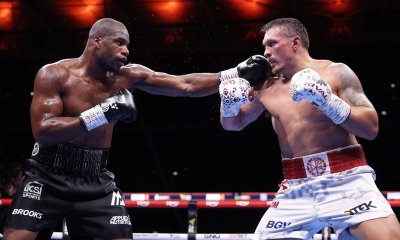
 Featured Articles4 weeks ago
Featured Articles4 weeks agoOleksandr Usyk Continues to Amaze; KOs Daniel Dubois in 5 One-Sided Rounds






